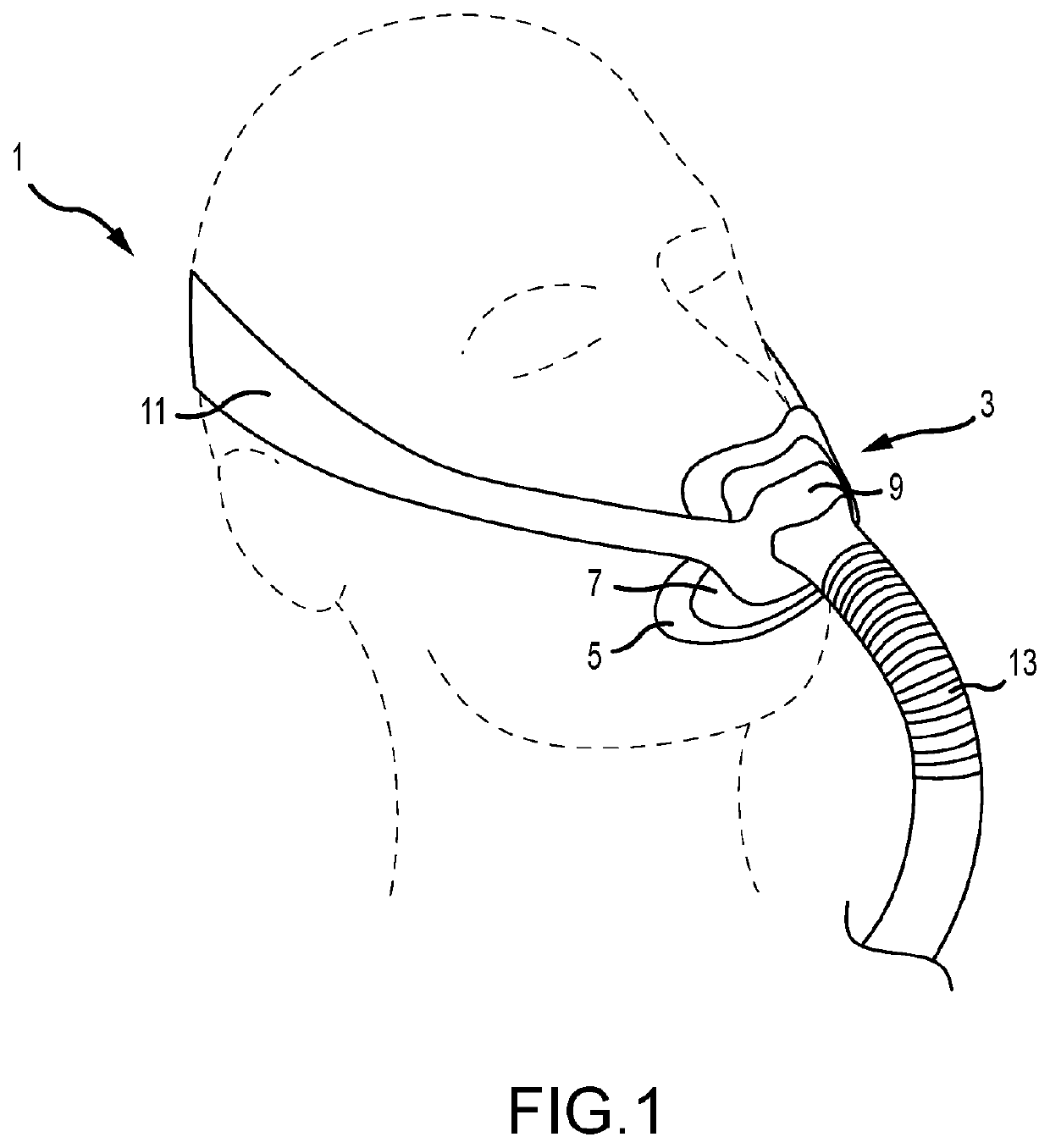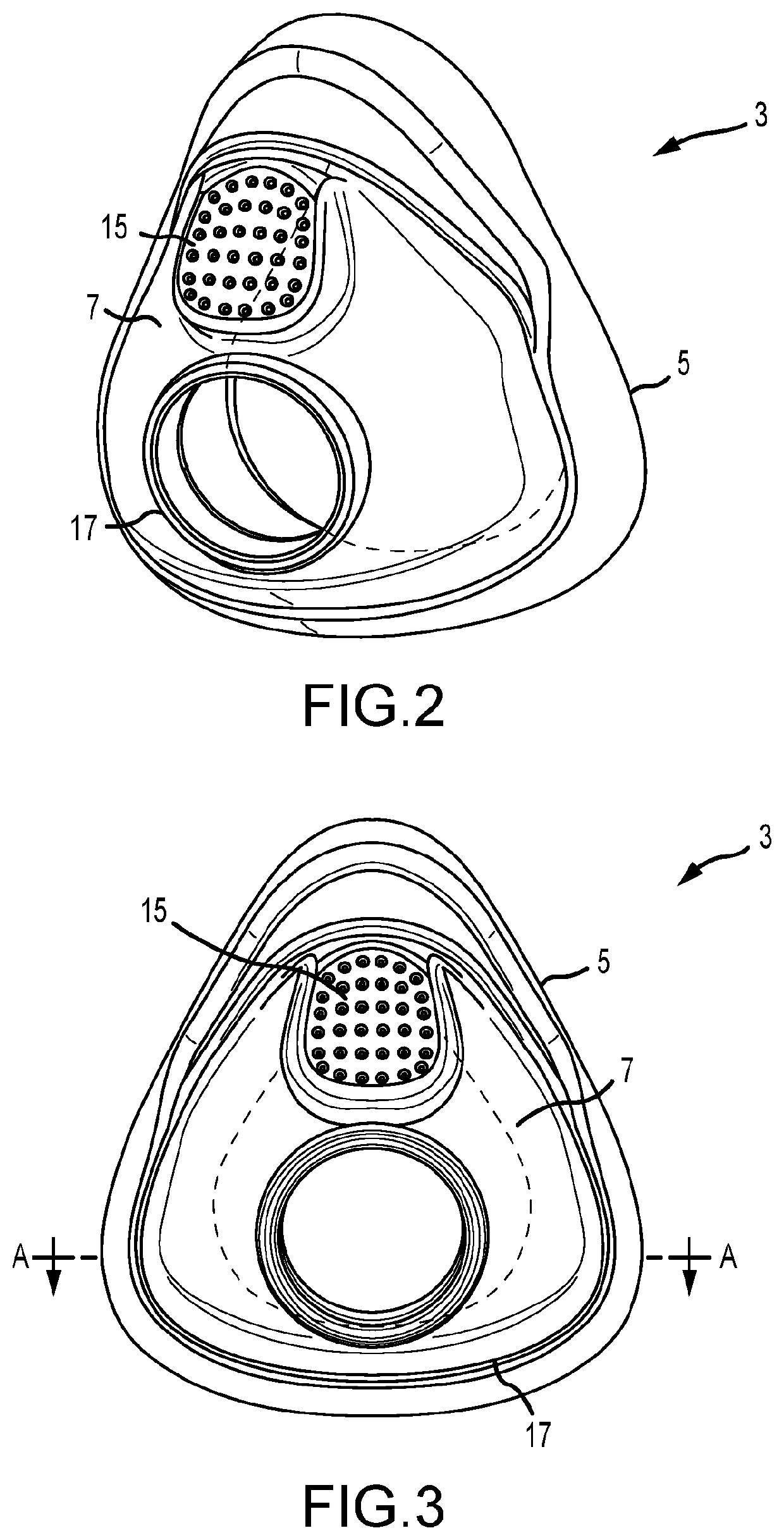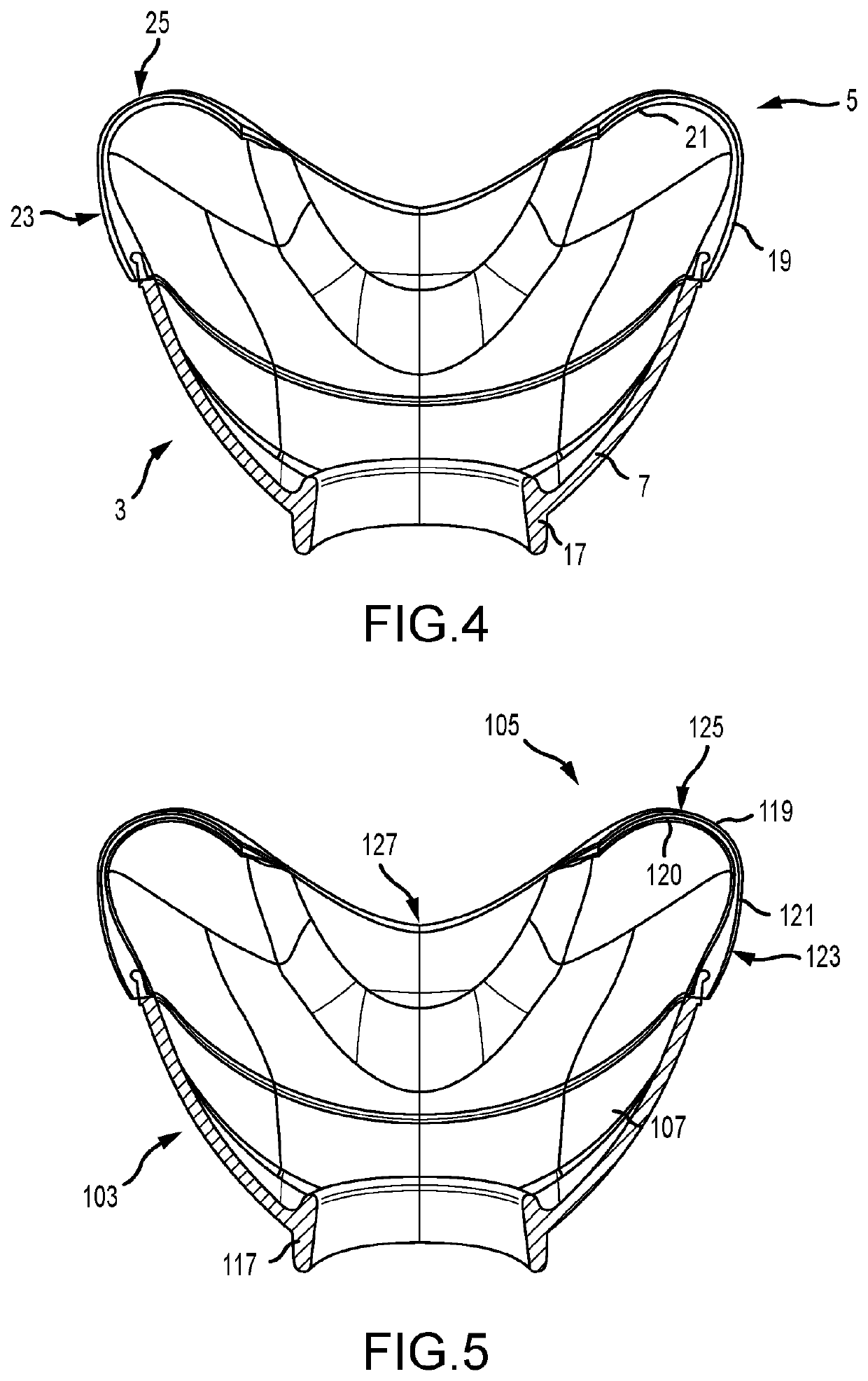A composite textile cushion
a textile cushion and composite technology, applied in the field of respiratory patient interface, can solve the problems of reducing the initial engagement of users, patients deterring from using cpap therapy, and rarely achieving a full and restorative night's sleep, and achieve the effect of reducing the recovery of textiles
- Summary
- Abstract
- Description
- Claims
- Application Information
AI Technical Summary
Benefits of technology
Problems solved by technology
Method used
Image
Examples
Embodiment Construction
[0066]Various embodiments and methods of manufacture will now be described with reference to FIGS. 1 to 18(c). In these figures, like reference numbers are used to indicate like features. Where several embodiments are illustrated, like reference numbers may be used for like or similar features in subsequent embodiments but with the addition of a multiple of 100, for example 2, 102, 202, etc.
[0067]Directional terminology used in the following description is for ease of description and reference only, it is not intended to be limiting. For example, the terms ‘front’, ‘rear’, ‘upper’, ‘lower’, and other related terms refer to the location of a part or portion of a respiratory mask relative to a user, where ‘front’ refers to a location that is distal to the user (when the mask is in use) and ‘rear’ refers to a location that is proximal to the user by comparison. The terms ‘upper’ and ‘lower’ refer to the location of a part or component of a mask relative to the rest of the mask when the...
PUM
 Login to View More
Login to View More Abstract
Description
Claims
Application Information
 Login to View More
Login to View More - R&D
- Intellectual Property
- Life Sciences
- Materials
- Tech Scout
- Unparalleled Data Quality
- Higher Quality Content
- 60% Fewer Hallucinations
Browse by: Latest US Patents, China's latest patents, Technical Efficacy Thesaurus, Application Domain, Technology Topic, Popular Technical Reports.
© 2025 PatSnap. All rights reserved.Legal|Privacy policy|Modern Slavery Act Transparency Statement|Sitemap|About US| Contact US: help@patsnap.com



